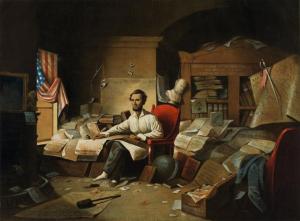American Merchant Ships and Sailors
Nonfiction, Religion & Spirituality, New Age, History, Fiction & Literature| Author: | Willis John Abbot | ISBN: | 9781465544636 |
| Publisher: | Library of Alexandria | Publication: | March 8, 2015 |
| Imprint: | Language: | English |
| Author: | Willis John Abbot |
| ISBN: | 9781465544636 |
| Publisher: | Library of Alexandria |
| Publication: | March 8, 2015 |
| Imprint: | |
| Language: | English |
When the Twentieth Century opened, the American sailor was almost extinct. The nation which, in its early and struggling days, had given to the world a race of seamen as adventurous as the Norse Vikings had, in the days of its greatness and prosperity turned its eyes away from the sea and yielded to other people the mastery of the deep. One living in the past, reading the newspapers, diaries and record-books of the early days of the Nineteenth Century, can hardly understand how an occupation which played so great a part in American life as seafaring could ever be permitted to decline. The dearest ambition of the American boy of our early national era was to command a clipper ship—but how many years it has been since that ambition entered into the mind of young America! In those days the people of all the young commonwealths from Maryland northward found their interests vitally allied with maritime adventure. Without railroads, and with only the most wretched excuses for post-roads, the States were linked together by the sea; and coastwise traffic early began to employ a considerable number of craft and men. Three thousand miles of ocean separated Americans from the market in which they must sell their produce and buy their luxuries. Immediately upon the settlement of the seaboard the Colonists themselves took up this trade, building and manning their own vessels and speedily making their way into every nook and corner of Europe. We, who have seen, in the last quarter of the Nineteenth Century, the American flag the rarest of all ensigns to be met on the water, must regard with equal admiration and wonder the zeal for maritime adventure that made the infant nation of 1800 the second seafaring people in point of number of vessels, and second to none in energy and enterprise.
When the Twentieth Century opened, the American sailor was almost extinct. The nation which, in its early and struggling days, had given to the world a race of seamen as adventurous as the Norse Vikings had, in the days of its greatness and prosperity turned its eyes away from the sea and yielded to other people the mastery of the deep. One living in the past, reading the newspapers, diaries and record-books of the early days of the Nineteenth Century, can hardly understand how an occupation which played so great a part in American life as seafaring could ever be permitted to decline. The dearest ambition of the American boy of our early national era was to command a clipper ship—but how many years it has been since that ambition entered into the mind of young America! In those days the people of all the young commonwealths from Maryland northward found their interests vitally allied with maritime adventure. Without railroads, and with only the most wretched excuses for post-roads, the States were linked together by the sea; and coastwise traffic early began to employ a considerable number of craft and men. Three thousand miles of ocean separated Americans from the market in which they must sell their produce and buy their luxuries. Immediately upon the settlement of the seaboard the Colonists themselves took up this trade, building and manning their own vessels and speedily making their way into every nook and corner of Europe. We, who have seen, in the last quarter of the Nineteenth Century, the American flag the rarest of all ensigns to be met on the water, must regard with equal admiration and wonder the zeal for maritime adventure that made the infant nation of 1800 the second seafaring people in point of number of vessels, and second to none in energy and enterprise.















